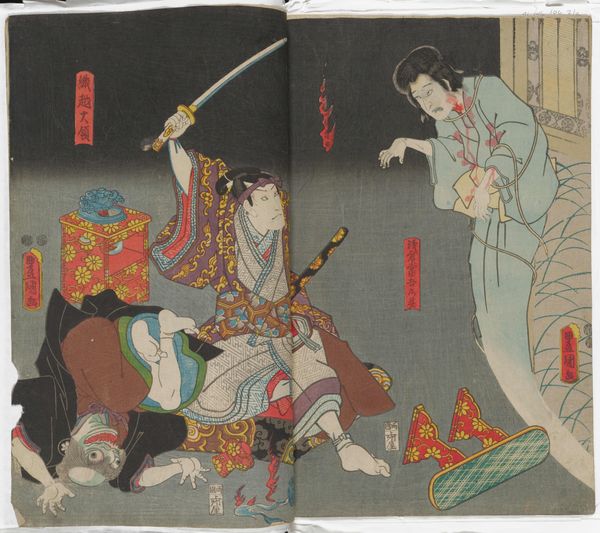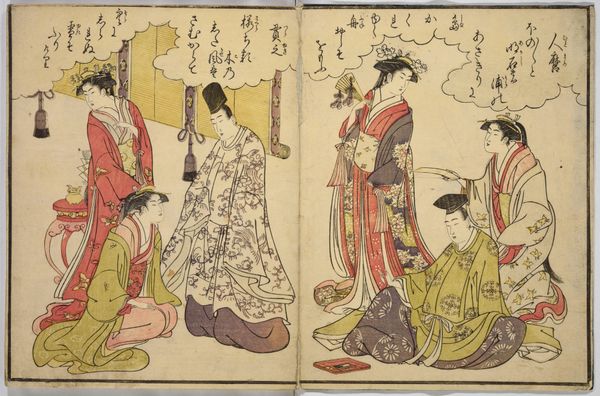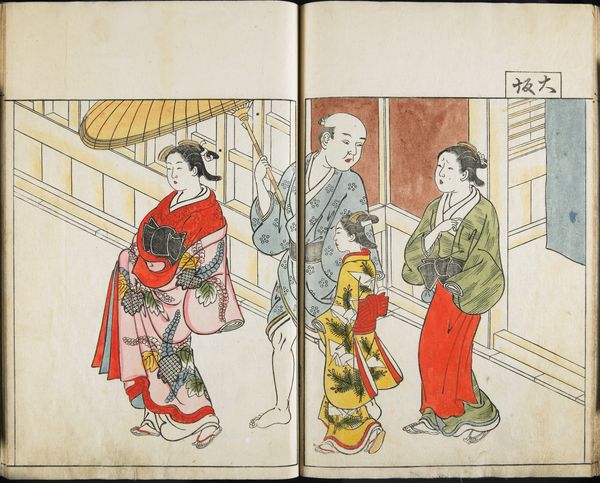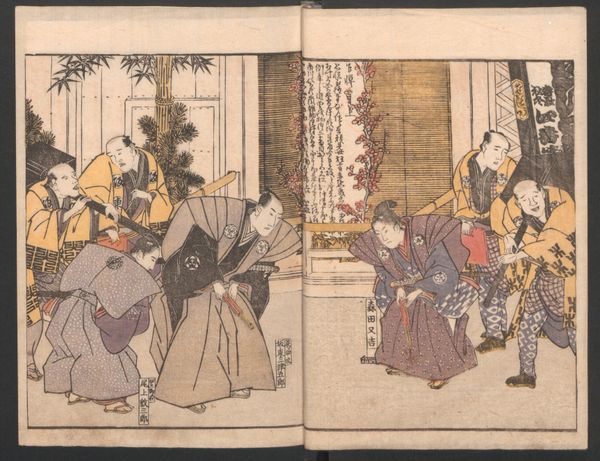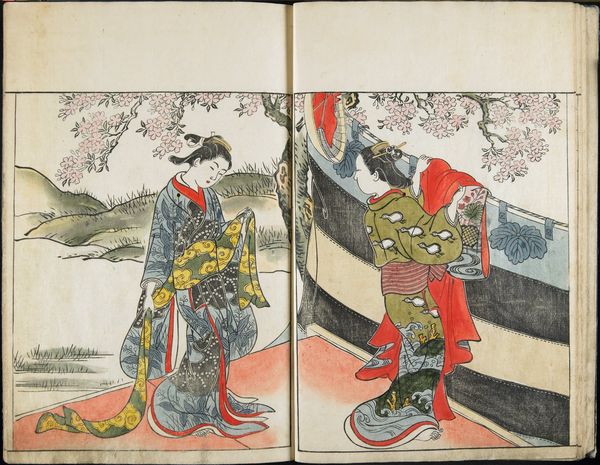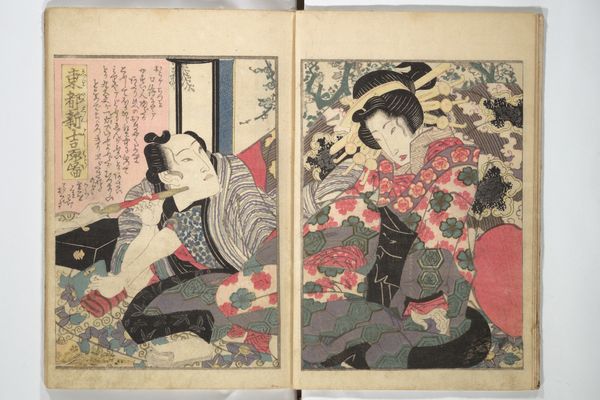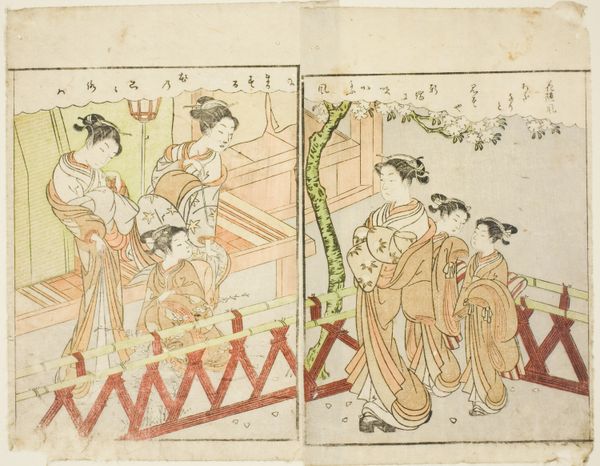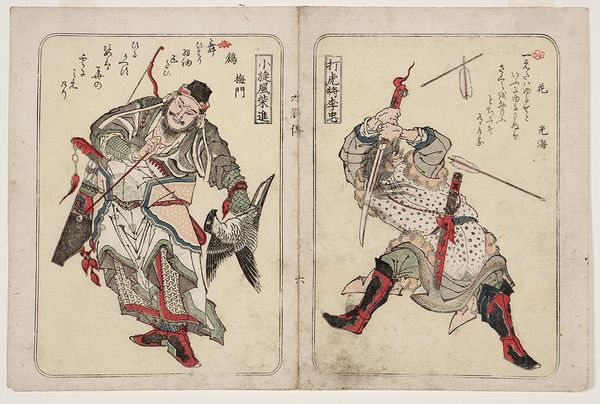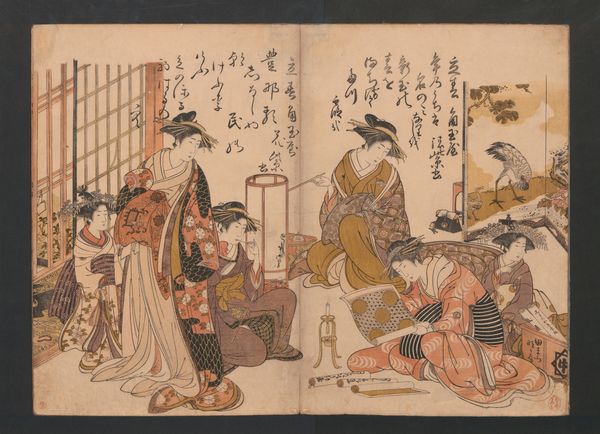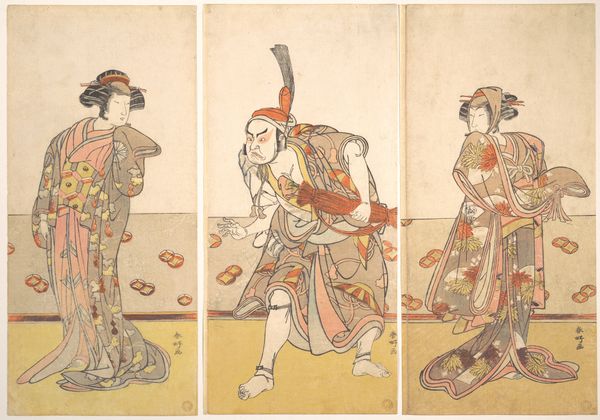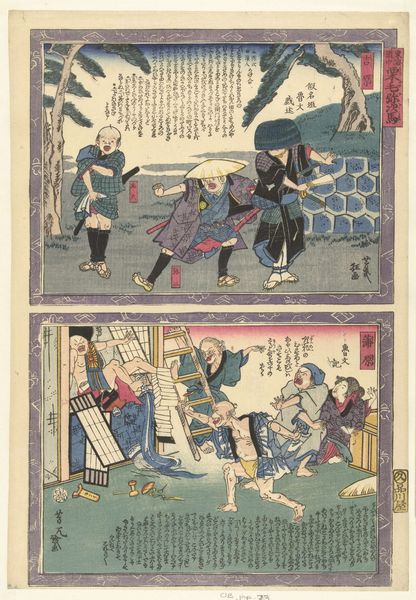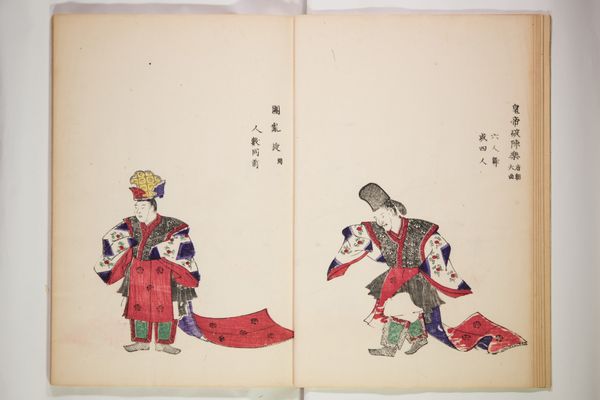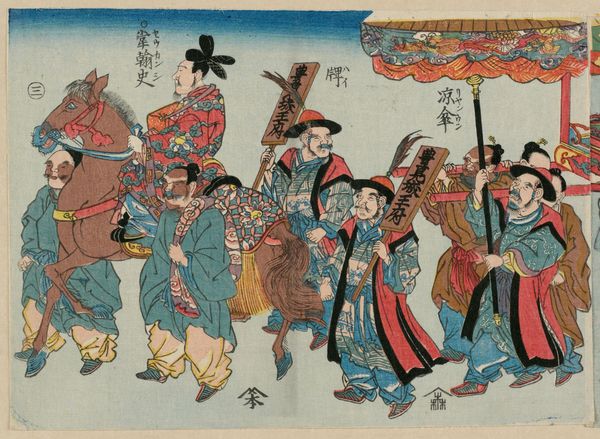
Actors Ichikawa Ebizō V as Banzui Chōbei (R) and Iwai Kumesaburō III as Shirai Gonpachi (L) Possibly 1850 - 1853
0:00
0:00
print, ink, woodblock-print
#
portrait
#
narrative-art
# print
#
asian-art
#
ukiyo-e
#
figuration
#
ink
#
woodblock-print
Dimensions: 14 3/8 × 9 5/8 in. (36.5 × 24.5 cm) (image, sheet, vertical ōban) each sheet
Copyright: Public Domain
Utagawa Kunisada produced this woodblock print depicting actors in a Kabuki play in Japan in the 19th century. Kabuki emerged as a popular form of entertainment, particularly among the merchant classes, during the Edo period, and prints like these were a way for fans to connect with their favorite performers and plays. Here, we see two actors in costume, Ichikawa Ebizō V as Banzui Chōbei, and Iwai Kumesaburō III as Shirai Gonpachi. The exaggerated expressions and dynamic poses are typical of Kabuki acting, as well as woodblock prints from that time. But what did these prints mean to the public? Kabuki often featured stories of heroism, romance, and morality, offering audiences a means of understanding and sometimes critiquing the social norms of their time. Scholars of Japanese history and art are essential in helping us understand not only the artistic conventions but also the social and political contexts that shaped these works. By looking at playbills, theater reviews, and other historical documents, we can better grasp the nuances of Kabuki and its role in Japanese society.
